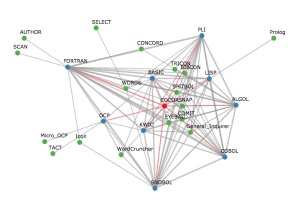
I just found out that a paper we gave in 2014 was just published. See The Rise and Fall Tool-Related Topics in CHum. Here is the abstract:
What can we learn from the discourse around text tools? More than might be expected. The development of text analysis tools has been a feature of computing in the humanities since IBM supported Father Busa’s production of the Index Thomisticus (Tasman 1957). Despite the importance of tools in the digital humanities (DH), few have looked at the discourse around tool development to understand how the research agenda changed over the years. Recognizing the need for such an investigation a corpus of articles from the entire run of Computers and the Humanities (CHum) was analyzed using both distant and close reading techniques. By analyzing this corpus using traditional category assignments alongside topic modelling and statistical analysis we are able to gain insight into how the digital humanities shaped itself and grew as a discipline in what can be considered its “middle years,” from when the field professionalized (through the development of journals like CHum) to when it changed its name to “digital humanities.” The initial results (Simpson et al. 2013a; Simpson et al. 2013b), are at once informative and surprising, showing evidence of the maturation of the discipline and hinting at moments of change in editorial policy and the rise of the Internet as a new forum for delivering tools and information about them.